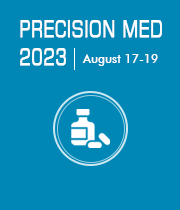Title: Platelet to lymphocyte ratio (PLR) and its association with heart failure clinical outcomes; A systematic review and meta-analysis
Abstract:
Background: Inflammation is believed to play a role in the pathogenesis of heart failure (HF). However, the potential role of platelet-to-lymphocyte ratio (PLR) as a novel biomarker for assessing HF prognosis requires further investigation. The aim of this study was to evaluate the impact of PLR on clinical outcomes in HF.
Methods: We conducted a systematic review and meta-analysis of English published records from PubMed/Medline, Scopus, and Web of Science databases up until May 2022. Relevant articles that assessed PLR in relation to clinical outcomes such as mortality, rehospitalization, HF worsening, and HF detection were included. We also performed a subgroup analysis based on death/survival status.
Results: A total of 16 articles involving 10,860 individuals were finally selected for analysis (mean age: 69.50 ± 12.80 years, males: 64.96%). The overall mean PLR among HF patients was 169.86 (95% confidence interval [CI]: 156.88 – 182.84). Fourteen articles (n = 7,570) reported mortality rates in HF, either during follow-up (PLR: 164.47, 95% CI: 149.48 – 179.46) or in-hospital (PLR: 192.83, 95% CI: 150.06 – 235.61), with a mean PLR of 169.44 (95% CI: 156.18 – 182.71). Further analysis revealed that PLR was significantly lower in survived HF patients compared to the deceased group (155.13, 95% CI: 130.13 – 180.13 vs. 203.08, 95% CI: 183.18 – 222.98; standard mean difference: -0.657, 95% CI: -1.002, -0.313; p < 0.001). However, PLR failed to show any association with mortality risk (hazard ratio [HR]: 1.19, 95% CI: 0.95 – 1.50; p = 0.132). Due to limited available studies, analysis of other clinical outcomes was not feasible.
Conclusions: This systematic review suggests that caution should be exercised when using PLR as a prognostic marker in HF patients, and further studies are warranted to explore the exact association
Audience Take Away Notes:
- Biomarkers are emerging prognostic factors in medicine.
- Inflammatory biomarkers are widely available and could be used as valuable tools for prognosis assessment, especially in nations with limited health care resources.
- PLR is an inflammatory biomarker with controversial relation with HF prognosis.
- Our findings indicate PLR could be a potential prognostic biomarker to differentiate high risk HF patients. However, more evidence is still required to prove the exact prognostic capability of PLR in HF era.


